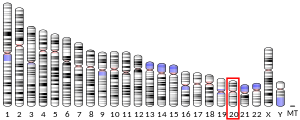PET117
| PET117 | |||||||||||||||||||||||||||||||||||||||||||||||||||
|---|---|---|---|---|---|---|---|---|---|---|---|---|---|---|---|---|---|---|---|---|---|---|---|---|---|---|---|---|---|---|---|---|---|---|---|---|---|---|---|---|---|---|---|---|---|---|---|---|---|---|---|
| Identifiers | |||||||||||||||||||||||||||||||||||||||||||||||||||
| Aliases | PET117, CSRP2BP, PET117 homolog, PET117 cytochrome c oxidase chaperone, MC4DN19 | ||||||||||||||||||||||||||||||||||||||||||||||||||
| External IDs | OMIM: 614771; MGI: 5295678; HomoloGene: 130056; GeneCards: PET117; OMA:PET117 - orthologs | ||||||||||||||||||||||||||||||||||||||||||||||||||
| |||||||||||||||||||||||||||||||||||||||||||||||||||
| |||||||||||||||||||||||||||||||||||||||||||||||||||
| |||||||||||||||||||||||||||||||||||||||||||||||||||
| |||||||||||||||||||||||||||||||||||||||||||||||||||
| Wikidata | |||||||||||||||||||||||||||||||||||||||||||||||||||
| |||||||||||||||||||||||||||||||||||||||||||||||||||
PET117 homolog is a protein that in humans is encoded by the PET117 gene.[5] Localized to mitochondria, this protein is a chaperone protein involved in the assembly of mitochondrial Complex IV, or Cytochrome C Oxidase.[6][7] Mutations in this gene can cause Complex IV deficiency with symptoms including medulla oblongata lesions and lactic acidosis.[8]
Structure
[edit]The PET117 gene is located on the p arm of chromosome 20 in position 11.23 and spans 5,314 base pairs.[5] The gene produces a 9.2 kDa protein composed of 81 amino acids.[9][10] PET117 localizes to mitochondria.[7]
Function
[edit]The protein encoded by PET117 is a chaperone protein involved in Complex IV biogenesis, interacting with MR-1S and possibly other Complex IV structural subunits. The presence of PET100 is required for this interaction.[6]
Clinical Significance
[edit]The only reported mutation in the PET117 gene was a homozygous nonsense mutation (c. 172 C>T) in two sister patients. Both were diagnosed with Complex IV deficiency and had lesions in their medulla oblongata, along with lactic acidosis. Symptoms in the older sister included abnormal motor development, regression in speech and motor skills after age ten, bradykinesia, hypokinesia, and pyramidal signs with positive Babinski response. The younger sister had protein losing enteropathy (PLE), recurrent respiratory infections, neutropenia, hypogammaglobulinemia, delayed motor and general development, and exercise intolerance.[8]
Interactions
[edit]PET117 interacts with MR-1S and possibly other Complex IV structural subunits. This interaction is dependent on the presence of PET100.[6]
References
[edit]- ^ a b c GRCh38: Ensembl release 89: ENSG00000232838 – Ensembl, May 2017
- ^ a b c GRCm38: Ensembl release 89: ENSMUSG00000098387 – Ensembl, May 2017
- ^ "Human PubMed Reference:". National Center for Biotechnology Information, U.S. National Library of Medicine.
- ^ "Mouse PubMed Reference:". National Center for Biotechnology Information, U.S. National Library of Medicine.
- ^ a b "Entrez Gene: PET117 homolog". Retrieved 2018-08-09.
- ^ a b c Vidoni S, Harbour ME, Guerrero-Castillo S, Signes A, Ding S, Fearnley IM, Taylor RW, Tiranti V, Arnold S, Fernandez-Vizarra E, Zeviani M (February 2017). "MR-1S Interacts with PET100 and PET117 in Module-Based Assembly of Human Cytochrome c Oxidase". Cell Reports. 18 (7): 1727–1738. doi:10.1016/j.celrep.2017.01.044. hdl:2066/170194. PMID 28199844.
- ^ a b Online Mendelian Inheritance in Man (OMIM): 614771
- ^ a b Renkema GH, Visser G, Baertling F, Wintjes LT, Wolters VM, van Montfrans J, de Kort GA, Nikkels PG, van Hasselt PM, van der Crabben SN, Rodenburg RJ (June 2017). "Mutated PET117 causes complex IV deficiency and is associated with neurodevelopmental regression and medulla oblongata lesions". Human Genetics. 136 (6): 759–769. doi:10.1007/s00439-017-1794-7. PMC 5429353. PMID 28386624.
- ^ Zong NC, Li H, Li H, Lam MP, Jimenez RC, Kim CS, et al. (October 2013). "Integration of cardiac proteome biology and medicine by a specialized knowledgebase". Circulation Research. 113 (9): 1043–53. doi:10.1161/CIRCRESAHA.113.301151. PMC 4076475. PMID 23965338.
- ^ "PET117 - Protein PET117 homolog, mitochondrial". Cardiac Organellar Protein Atlas Knowledgebase (COPaKB). Archived from the original on 2018-08-10. Retrieved 2018-08-10.
Further reading
[edit]- Szklarczyk R, Wanschers BF, Cuypers TD, Esseling JJ, Riemersma M, van den Brand MA, Gloerich J, Lasonder E, van den Heuvel LP, Nijtmans LG, Huynen MA (February 2012). "Iterative orthology prediction uncovers new mitochondrial proteins and identifies C12orf62 as the human ortholog of COX14, a protein involved in the assembly of cytochrome c oxidase". Genome Biology. 13 (2): R12. doi:10.1186/gb-2012-13-2-r12. PMC 3334569. PMID 22356826.
- Vidoni S, Harbour ME, Guerrero-Castillo S, Signes A, Ding S, Fearnley IM, Taylor RW, Tiranti V, Arnold S, Fernandez-Vizarra E, Zeviani M (February 2017). "MR-1S Interacts with PET100 and PET117 in Module-Based Assembly of Human Cytochrome c Oxidase". Cell Reports. 18 (7): 1727–1738. doi:10.1016/j.celrep.2017.01.044. hdl:2066/170194. PMID 28199844.
This article incorporates text from the United States National Library of Medicine, which is in the public domain.




